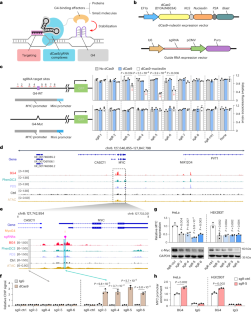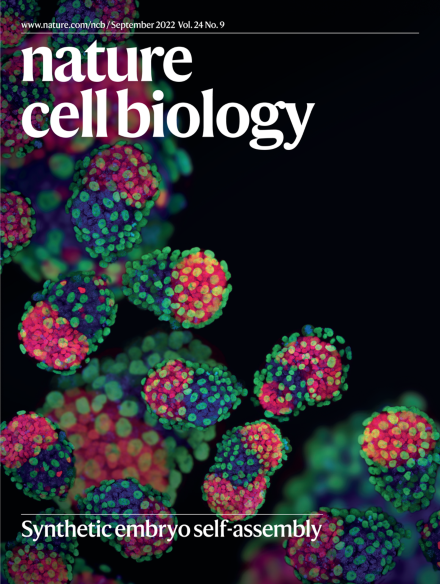Targeting specific DNA G-quadruplexes with CRISPR-guided G-quadruplex-binding proteins and ligands
IF 17.3
1区 生物学
Q1 CELL BIOLOGY
引用次数: 0
Abstract
Despite the demonstrated importance of DNA G-quadruplexes (G4s) in health and disease, technologies to readily manipulate specific G4 folding for functional analysis and therapeutic purposes are lacking. Here we employ G4-stabilizing protein/ligand in conjunction with CRISPR to selectively facilitate single or multiple targeted G4 folding within specific genomic loci. We demonstrate that fusion of nucleolin with a catalytically inactive Cas9 can specifically stabilize G4s in the promoter of oncogene MYC and muscle-associated gene Itga7 as well as telomere G4s, leading to cell proliferation arrest, inhibition of myoblast differentiation and cell senescence, respectively. Furthermore, CRISPR can confer intra-G4 selectivity to G4-binding compounds pyridodicarboxamide and pyridostatin. Compared with traditional G4 ligands, CRISPR-guided biotin-conjugated pyridodicarboxamide enables a more precise investigation into the biological functionality of de novo G4s. Our study provides insights that will enhance understanding of G4 functions and therapeutic interventions. Qin, Liu and colleagues develop a tool that combines CRISPR technology with G-quadruplex (G4)-stabilizing protein or ligand to specifically target DNA G4 structures. This tool provides better understanding of G4 functions and enables G4-based drug development.


利用 CRISPR 引导的 G-四联体结合蛋白和配体靶向特定 DNA G-四联体
尽管 DNA G-四重链(G4)在健康和疾病中的重要性已得到证实,但目前仍缺乏可随时操纵特定 G4 折叠以进行功能分析和治疗的技术。在这里,我们将 G4 稳定蛋白/配体与 CRISPR 结合使用,选择性地促进特定基因组位点内的单个或多个目标 G4 折叠。我们证明,将核蛋白与催化不活跃的 Cas9 融合,可以特异性地稳定癌基因 MYC 和肌肉相关基因 Itga7 启动子中的 G4s 以及端粒 G4s,从而分别导致细胞增殖停滞、抑制成肌细胞分化和细胞衰老。此外,CRISPR 还能赋予与 G4 结合的化合物吡啶二甲酰胺和哒哒司汀以 G4 内选择性。与传统的G4配体相比,CRISPR引导的生物素连接的吡啶二甲酰胺能更精确地研究新G4的生物功能。我们的研究提供的见解将有助于加深对 G4 功能和治疗干预的理解。
本文章由计算机程序翻译,如有差异,请以英文原文为准。
求助全文
约1分钟内获得全文
求助全文
来源期刊

Nature Cell Biology
生物-细胞生物学
CiteScore
28.40
自引率
0.90%
发文量
219
审稿时长
3 months
期刊介绍:
Nature Cell Biology, a prestigious journal, upholds a commitment to publishing papers of the highest quality across all areas of cell biology, with a particular focus on elucidating mechanisms underlying fundamental cell biological processes. The journal's broad scope encompasses various areas of interest, including but not limited to:
-Autophagy
-Cancer biology
-Cell adhesion and migration
-Cell cycle and growth
-Cell death
-Chromatin and epigenetics
-Cytoskeletal dynamics
-Developmental biology
-DNA replication and repair
-Mechanisms of human disease
-Mechanobiology
-Membrane traffic and dynamics
-Metabolism
-Nuclear organization and dynamics
-Organelle biology
-Proteolysis and quality control
-RNA biology
-Signal transduction
-Stem cell biology
 求助内容:
求助内容: 应助结果提醒方式:
应助结果提醒方式:


